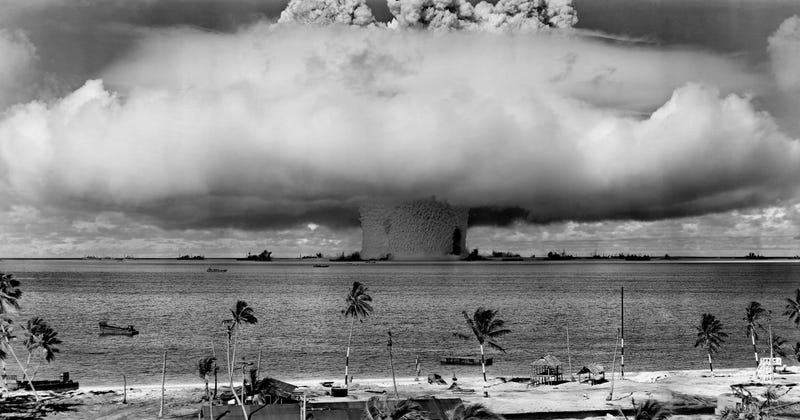
News came out yesterday that Russian government media “leaked” information about some sort of new super-radioactive nuclear torpedo, as much as Russian government media can “leak” things. Many publications ran with the “super-radioactive” bit, but it’s actually not too important.
And that’s because we’ve been devising horrific, terrible ways to
completely lay waste to the Earth with super amounts of sickening,
deadly radiation for decades.The stated intent of the new torpedo sounds ominous enough, from the text seen on Russian television:
Purpose—the defeat of the important economic facilities in the area of the enemy coast, and causing unacceptable damage to… the country through the establishment of extensive zones of radioactive contamination, unsuitable for implementation in these areas of military, economic, business or other activity for a long time.And that’s pretty scary. Adding to that fear factor, the torpedo would travel at speeds of up to 65 mph after delivery by a nuclear-powered underwater drone, that would itself be carried externally by a nuclear-powered submarine. Furthermore, it would be able to “avoid all acoustic tracking devices and other traps,” which is really just such a bold claim as to be nonsense.
So if you take the bold claims, the threatening radiation, and the “leak” in Russian state media, what you really end up getting is a lot of saber-rattling and fear-mongering.
But truth be told, if you know your nuclear weapon and delivery methods development and history (and I have no idea why you wouldn’t, it’s clearly important, everyday walking-around information), you’d know that this sort of radioactive guillotine has been hanging over humanity’s collective heads for a long time now.
In fact, most elements of Russia’s new “Ocean Multipurpose System: Status-6” have been around for a while. If we break down the entire system, we’re left with a nuclear submarine, an underwater drone, and a super-radioactive nuke.
The Sub
Nuclear submarines have been around for a while, starting with the USS Nautilus, and Russia’s latest ballistic missile submarine is known as the Borei-class: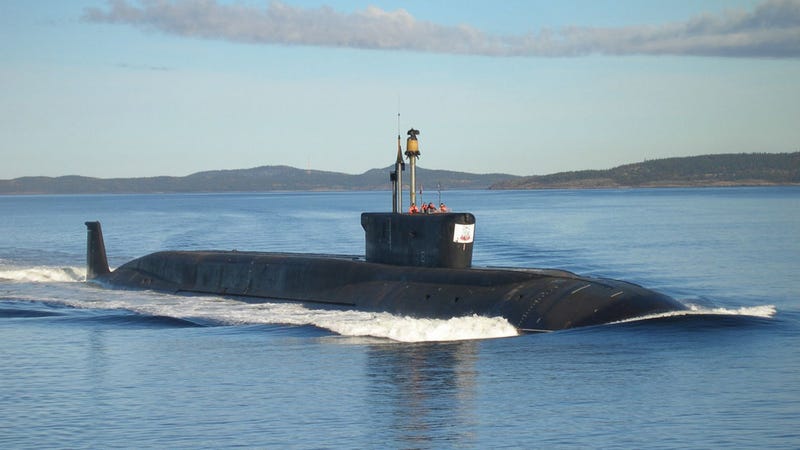 The Borei-class, so far made up of the submarines Yuriy Dolgorukiy, Alexander Nevsky, and Vladimir Monomakh,
with seven more planned, form the backbone Russia’s nuclear deterrent.
At a length of 518 feet and weighing in at 14,448 tons on the surface,
and with 107 crew, the first three Borei subs are slated to carry 16 Bulava missiles each, with each Bulava carrying between six and ten nuclear warheads.
The Borei-class, so far made up of the submarines Yuriy Dolgorukiy, Alexander Nevsky, and Vladimir Monomakh,
with seven more planned, form the backbone Russia’s nuclear deterrent.
At a length of 518 feet and weighing in at 14,448 tons on the surface,
and with 107 crew, the first three Borei subs are slated to carry 16 Bulava missiles each, with each Bulava carrying between six and ten nuclear warheads.
But in this case, a submarine like the Borei-class, or of one of Russia’s other nuclear submarines, like the Yasen-class, the Delta IV-class, or the Oscar-class, would all simply act as the delivery vehicle for something much smaller, and unmanned.
The Delivery System
Unmanned Underwater Vehicles (UUVs), or Autonomous Underwater Vehicles (AUVs), have been hitting the seas over the past few years. Many of them are still in development, but unlike their flying counterparts such as the Predator, Global Hawk, or the Sentinel, AUVs by their very nature are much less public and much harder to spot.But they’re already out there. One, the Proteus, manufactured by the non-profit Battelle Memorial Institute, is in development right now and it’s looks to be highly capable.
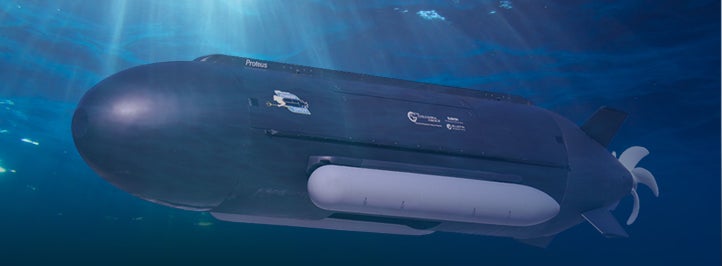 The Proteus is capable of carrying up to 725 kilograms on each side
(more than enough for a nuke), and, according to defense contractor General Dynamics, it is “capable of offensive operations.”
The Proteus is capable of carrying up to 725 kilograms on each side
(more than enough for a nuke), and, according to defense contractor General Dynamics, it is “capable of offensive operations.”
But the Proteus isn’t the only system out there, and it’s joined in the AUV space by projects like the German Sea Otter Mk II, the American Knifefish, and the Swedish Double Eagle.
Russia’s certainly got some systems of its own in the works, too.
The High Speed Torpedo
Motorized torpedoes, as we know them, have been around since 1866, when British engineer Robert Whitehead created his Whitehead Torpedo. The Whitehead Torpedo wasn’t very advanced, with a 40-pound warhead and a top speed of eight to ten knots.And military technology has come a long way since then. For an example of what I’m talking about, this is the VA-111 Shkval supercavitating torpedo, developed by the Soviet Union in the 1960s and 1970s and still in service today:
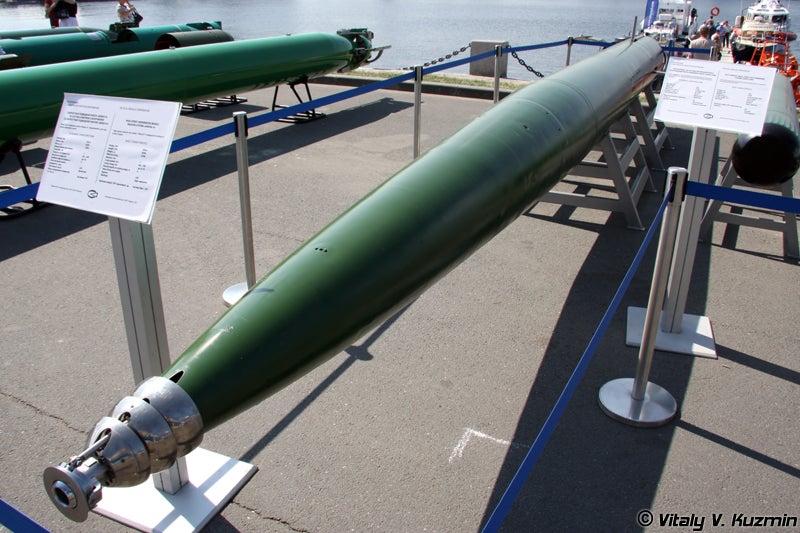 The Shkval is one part traditional torpedo, and one part
rocket. That funny-looking snout it’s got, along with its rocket motor,
enables supercavitation, a process which essentially pushes the water
away and around the torpedo itself, enveloping it in a gas bubble.
The Shkval is one part traditional torpedo, and one part
rocket. That funny-looking snout it’s got, along with its rocket motor,
enables supercavitation, a process which essentially pushes the water
away and around the torpedo itself, enveloping it in a gas bubble.
The result is that the Shkval makes any mere 65 mile per hour torpedo look like child’s play. The Shkval is generally thought to move towards its target at speeds over 200 MPH.
The Nuke
And then we come to the last, and potentially most terrifying bit of “Status 6” – the super-radioactive nuclear weapon. The Russian leaks were a bit coy as to the specifics of the design, as militaries are wont to do when it comes to nuclear warheads. Some have speculated that it may be a “dirty bomb,” or basically a regular explosive surrounded by radioactive shrapnel.When a dirty bomb goes off, it spreads radioactive fragments over a wide area. Theorized dirty bombs are usually posited in the context of terrorism, as they tend to be simple, crude designs that could be assembled easily with the right materials on hand. They’re not that destructive, but they’re also not that deadly, in the grand scheme of things.
But Russia didn’t seem to actually be talking about a dirty bomb, saying that the design of Status 6 would be to implement “the establishment of extensive zones of radioactive contamination, unsuitable for implementation in these areas of military, economic, business or other activity for a long time.”
Besides, a dirty bomb sounds a bit beneath the capabilities of the highly advanced Russian military.
In fact, what Status 6 sounds like it’d be employing would be a neutron bomb, also known as an “Enhanced Radiation Weapon.”
And neutron bombs really are terrifying. Instead of radioactive materials surrounding a conventional explosive, neutron bombs begin with a real, actual weapon employing nuclear fusion. And while nuclear fusion is what powers the sun, it’s actually a step beyond the nuclear weapons that destroyed Hiroshima and Nagasaki.
The fission (not fusion, fission) bombs that destroyed those two Japanese cities were notoriously radioactive, and though a definite estimate of just how many deaths were caused by the radiation (as opposed to blast effects, extreme heat, and natural cancers) are hard to come by, it’s certain that ionizing radiation was responsible for fatalities and lingering health effects.
But, and we’re going to get a little wonky here, the bombs that flattened Hiroshima and Nagasaki were actually far less radioactive than a theoretical bomb with a maximum amount of radiation.
The way a fusion bomb works is simple enough, in brief. A relatively small conventional explosive is first detonated to split uranium or plutonium atoms, thus initiating the fission reaction. That first nuclear explosion, generating massive amounts of both heat and pressure, is then used to set off a fusion reaction, where atoms are combined to generate an even bigger explosion.
To ensure optimal weapon efficiency, most fusion bomb designs try to keep the entire weapon core – or “physics package” – together for at least the first few milliseconds of the explosion. The physics package would be held together by a “radiation case,” and it’s usually made out of a dense metal, such as lead or uranium.
Not only does a strong radiation case help create a bigger bang, but a side effect is that it makes a fusion bomb derive much of its total energy not from radiation, but from the blast.
A neutron bomb switches up that equation.
Instead of making the radiation case out of thick uranium or lead, the radiation case is made out of the thinnest material possible. With that change, a neutron bomb could release as much as 10 times the radiation of a comparable regular fusion weapon.
You might be sitting there wondering why anyone would ever think of such an awful device, but when it was first dreamed up in the late 1950s, and for the next few decades, it was actually thought of as a “more humane” weapon than a regular nuke. The thinking behind it was that while, yes, there would be a massive explosion, it wouldn’t destroy as many buildings as a regular fusion device.
Instead, it would just kill the most amount of people possible. How lovely.
The United States, Russia, China, and France are all known to have tested these “enhanced radiation” weapons, and at the very least the U.S. actually deployed them in a tactical capacity for some time.
All the American neutron bombs have been retired since their original deployment in the 1970s, but information on their Russian use has been a bit more fleeting.
But Russia is said to have created them, and it wouldn’t be impossible for it to put one on a delivery system now.
And just as well, the Soviet Union had nuclear-tipped torpedoes going back to the 1950s.
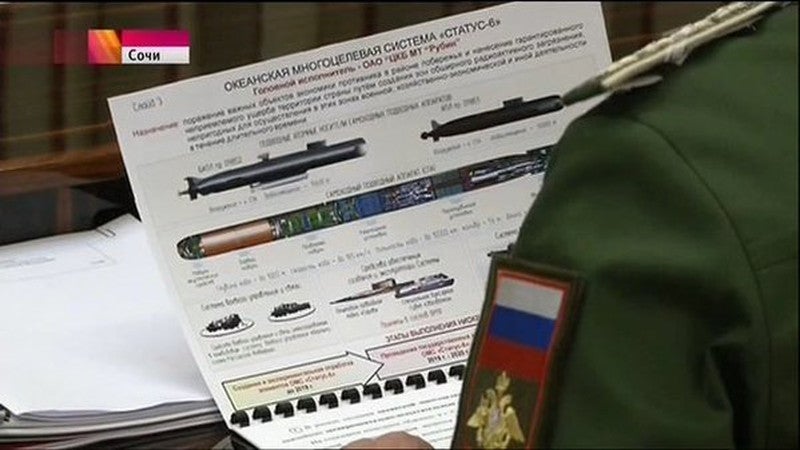 For Status 6, the individual components wouldn’t be much news at
all, then. It would just be a matter of putting all the pieces together.
For Status 6, the individual components wouldn’t be much news at
all, then. It would just be a matter of putting all the pieces together.


No comments:
Post a Comment